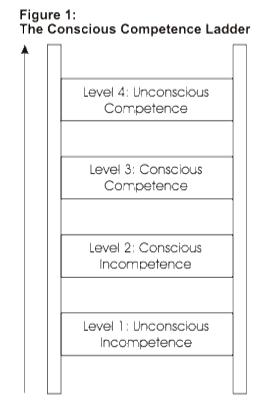As a newly minted “Technology Integration Educator” in my community, I’m struggling with the definition of my job title. What does the phrase “technology integration” really mean? How do we integrate technology? I can’t help but wonder if, when the overhead projector, or the radio, or even the blackboard for that matter, were introduced into the world of education, taskforces and positions were created to explore how to “integrate” these new technologies. I think not. What may be unique about our time is that there are so many new learning curves for us to scale that many folks don’t know where to begin. We’re afraid, or are overwhelmed. Or both. To prevent the onset of this future shock, we create the idea of “integration”, of gradually weaning ourselves from the old so that we can embrace the new. Unfortunately, we may run the risk of prolonging this process: We might get so caught up in how we adapt and adopt innovations that we forget that we need to actually “do it”, and use the new technology. So how do we overcome this “fear of flying”? What do we really mean by “integration”?
Maybe by understanding the process of learning new skills, we can prepare ourselves better as we take the next steps. Thinking about how we learn helps us to understand that it doesn’t happen in one fell swoop. There’s a process, a pattern. Wendy Passer, in a piece posted here, describes the “Four Levels of Competence” – Unconscious, then Conscious Incompetence; followed by Unconscious, then Conscious Competence. The idea, on one foot, is that we start out not knowing what we’re doing, and then go through a learning spectrum of being aware of, and at times overwhelmed by, our knowledge deficits. We might freeze, becoming ostriches with our heads in the sand. We then gradually gird our loins and learn the skill, thinking about how and what we are learning, and ultimately master the task so well that we stop thinking about what it is that we are doing, as it becomes second nature. For you visual folks, below is a graphic of the process I found at MindTools.com:

When we climb this ladder we create something new. What we learn becomes part of who we are and what we do. We are transforming the world and, therefore ourselves. We are integrating these new skills into the way we act, in AND on, the world.
So when we talk about “technology integration” we mean that we are integrating these new skills and approaching the art of teaching from a different direction. This type of integration is not merely incorporating new tech into pedagogy. It’s something far more profound: it’s the act of weaving connections between the educational practitioner and sources of new skills that can transform how the s/he interacts with material and the learner.
In the context of the literacies of the digital world (read Howard Rheingold’s Netsmart to learn more) a crucial component is collaboration. No longer is learning something that is performed by an isolated individual building a one-on-one relationship with content and the instructor. Today content is collective. Knowledge is built through collaboration with a crowd. No longer is there just one teacher. There are many. By necessity, then, teaching is not just transmitting information, and thus educational uses of technology are not simply about broadcasting knowledge. Teaching is weaving strands between content and learners, all in the context of connected educational communities.
And that’s the point. Technology integration is taking new, ever changing technology and seamlessly incorporating it strategically to aid in the construction of knowledge. The teacher becomes the learner; the learner becomes the teacher, and tools of the trade facilitate this process of “web-design”.
So getting back to our pedagogical fear factor. Learning new tech isn’t really hard. It’s just that we are so inundated with updates and new products that we get intimidated. We suffer from what I call “Technology Fatigue”. Too many emails. Too many tweets. Too many Facebook updates. All of these “distractions” get in the way of our advancing the art of teaching and learning; preventing us from seeing the big picture. We need to get a handle on it, taking one step at a time. We build on what we already know. That’s the key – that’s how we help ourselves incorporate what we have experienced and will soon encounter in our craft. Rather than concentrating on the tool, let’s focus on what we want our students to learn and how we can help make that happen. That way we see the whole process in a less off-putting light. We’ll stop being afraid.
Integration then, means that the teacher is able to focus on the true goal of education: Not the subject matter and not the means. Technology is a tool that helps us to focus on what’s really important: on learning and the student.
In The Connected Educator by Sheryl Nussbaum-Beach and Lani Ritter Hall, I found a great piece of text that says it all: “…we do not focus on the hammer or the nails, but on what we can build with the hammer and the value of what will transpire inside the space once we’ve created it”. Technology integration means leveraging our knowledge of how we learn and develop our competence, applying it to how we train one another to achieve the real goal: Creating environments enabling our students to expand the frontiers of their competence.
Let’s Just Do It.
This piece originally appeared on jewpoint0.org: The official Darim Online blog site.
- Bringing the Sand Home – Take Aways From the RealSchool Summer Sandox - July 22, 2013
- Playing in the Sand: Getting Ready for the RealSchool Summer Sandbox - July 7, 2013
- Swimming Lessons - March 4, 2013